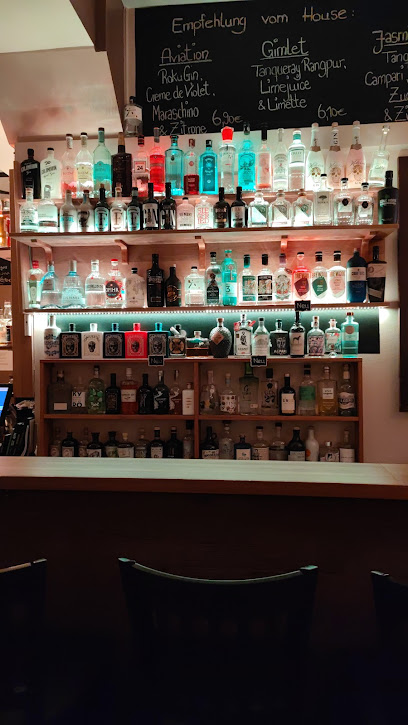
Equestrian Statue of King Johann
A majestic equestrian statue honoring King Johann, a symbol of Dresden's rich history and artistic legacy, standing proudly amidst the architectural splendor of Theaterplatz.
Dominating Dresden's Theaterplatz, the equestrian statue of King Johann stands as a proud symbol of Saxon history and artistry. Created by Johannes Schilling and erected in 1889, the bronze monument commemorates King Johann's reign (1854-1873) and his contributions to the region's arts and education. Flanked by architectural masterpieces like the Semper Opera House, the Zwinger Palace, and the Dresden Cathedral, the statue creates a stunning visual tableau. More than just a historical marker, the statue serves as a focal point for cultural events and gatherings, embodying the vibrant spirit of Dresden. Its intricate details and harmonious integration with the surrounding landscape make it a must-see for any visitor exploring the city's rich heritage and artistic legacy. The statue is a testament to Dresden's royal past and its enduring commitment to culture.
A brief summary to Statue of King Johann
- Theaterplatz 1, Dresden, Altstadt, 01067, DE
Local tips
- Visit Theaterplatz during the evening for a stunning view of the illuminated statue and surrounding historical buildings.
- Combine your visit with a performance at the Semper Opera House for a complete cultural experience.
- Take a guided walking tour of Theaterplatz to learn more about the history and significance of the statue and its surroundings.
Getting There
-
Walking
From the Frauenkirche, head east on Neumarkt towards the Altmarkt. Cross the Altmarkt and continue onto Wilsdruffer Straße. Turn right onto Theaterstraße, which leads directly to Theaterplatz. The statue is in the center of the square. The walk is approximately 5-10 minutes.
-
Public Transport
Take tram lines 4, 8, or 9 to the Theaterplatz stop. The statue is located in the center of the square, a short walk from the tram stop. A single ticket within the Dresden fare zone costs €3.40.
-
Taxi/Ride-Share
A taxi or ride-share from Dresden Hauptbahnhof (main train station) to Theaterplatz takes approximately 4 minutes and costs between €11-€13.
-
Driving
Navigate to 01067 Dresden. Follow signs for Zentrum (city center) and then Theaterplatz. Parking is limited directly at Theaterplatz. The Parkhaus Altmarkt and parking garage behind the Semperoper are nearby options. Expect to pay around €1.50-€3 per hour for parking.
Discover more about Statue of King Johann
Iconic landmarks you can’t miss
Dresden Armory
0.2 km
Discover a dazzling collection of ceremonial arms, armor, and Ottoman treasures inside Dresden Castle, revealing centuries of Saxon power and artistry.
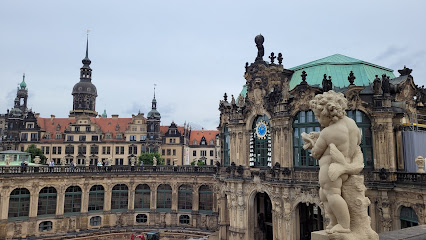
Schloßpl.
0.2 km
Experience Dresden's royal legacy at Schloßplatz, a meticulously restored square surrounded by architectural masterpieces and steeped in Saxon history.
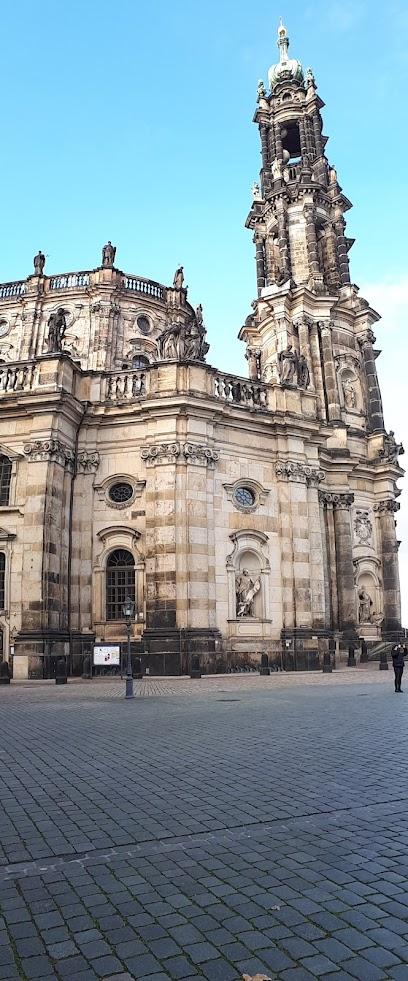
Statue des Hl. Dominikus
0.2 km
Discover the Statue of St. Dominic in Dresden's Stallhof, a serene monument amidst Renaissance splendor, offering a glimpse into the city's rich religious and artistic heritage and historical charm.
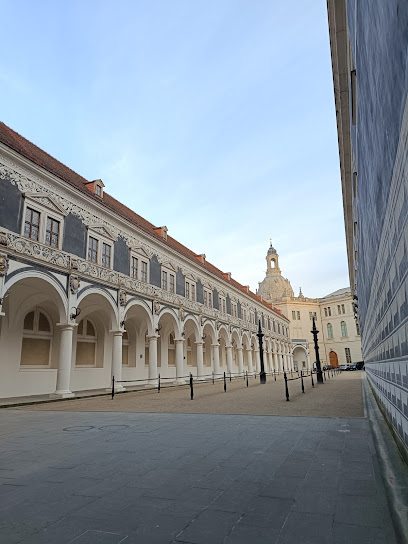
Dinglinger-Haus
0.3 km
Experience the grandeur of Baroque Dresden at the meticulously reconstructed Dinglinger House, a testament to the city's rich history and architectural brilliance, located in the heart of the Neumarkt.
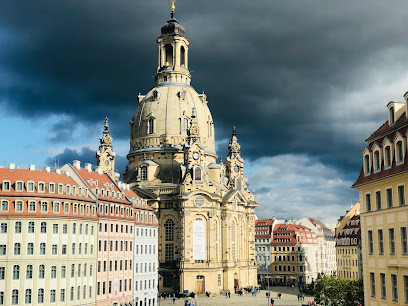
Postplatz
0.4 km
Discover Postplatz in Dresden: A historic square blending transportation, modern architecture, and access to iconic landmarks like Zwinger Palace and the Frauenkirche.

Altstadt Dresden
0.4 km
Discover Dresden's Altstadt: A captivating blend of Baroque splendor, historical significance, and cultural treasures reborn from the ashes of World War II.
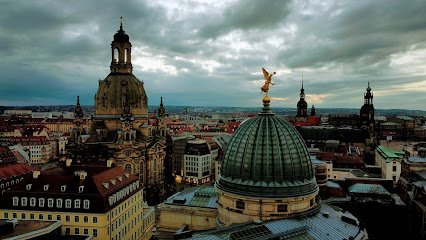
Martin Luther Statue
0.4 km
A towering bronze statue in Dresden's Neumarkt, honoring Martin Luther and the Reformation amidst stunning baroque architecture, symbolizing resilience and historical significance.
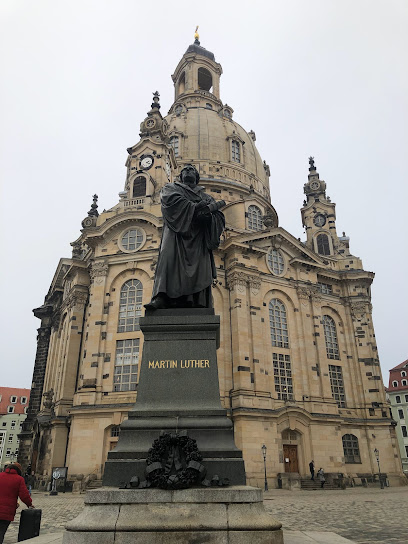
Dome ascent Frauenkirche Dresden
0.5 km
Ascend Dresden's iconic Frauenkirche dome for breathtaking panoramic views and experience a symbol of resilience, rebirth, and reconciliation in the heart of the city's historic center.
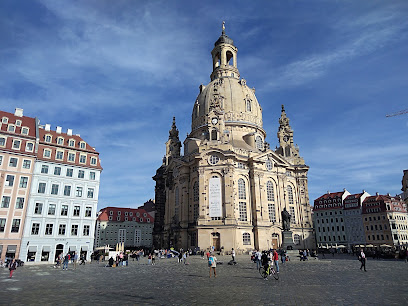
Frauenkirche Dresden
0.5 km
Experience the stunning beauty and rich history of Frauenkirche Dresden, a symbol of resilience and cultural heritage in the heart of the city.

Große Meißner Str. 15
0.5 km
Explore the architectural beauty of Dresden-Neustadt, where history meets modern culture in an unforgettable journey.

Brühl's Terrace
0.5 km
Discover Brühl's Terrace, a breathtaking historical landmark in Dresden, offering stunning views and rich cultural experiences in the heart of the city.
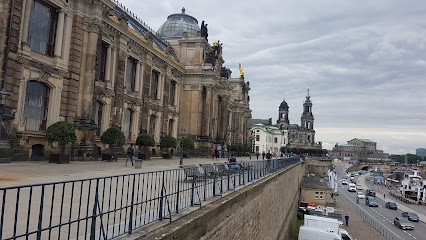
Altmarkt 1
0.5 km
Discover Dresden's historic heart at the Altmarkt, a vibrant square hosting the famous Striezelmarkt and surrounded by cultural landmarks, offering a blend of history and modern-day appeal.
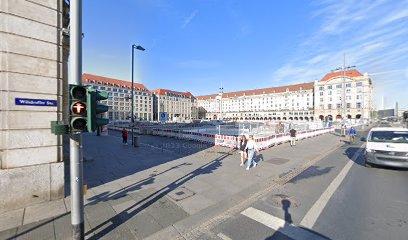
Friedrich August II Koenig Von Sachsen
0.5 km
A regal monument in Dresden's heart, commemorating King Friedrich August II and Saxony's rich history amidst the stunning architecture of the reconstructed Neumarkt.

Narrenhaus-Denkmal
0.5 km
Discover the Narrenhaus-Denkmal in Dresden, a captivating tribute to humor and artistry in the heart of the city.
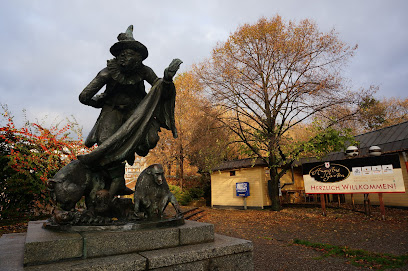
Festung Xperience (Festung Dresden)
0.5 km
Unearth Dresden's hidden past at Festung Xperience: an immersive journey through 450 years of history within the city's ancient fortress walls, featuring 360° projections and 3D sound.
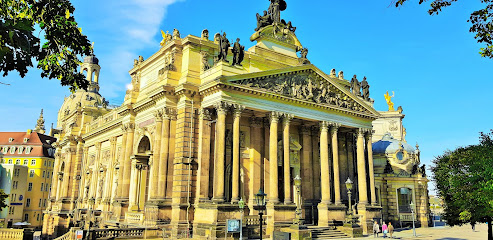
Unmissable attractions to see
Theaterplatz Dresden
0.0 km
Explore Theaterplatz, Dresden's historic square surrounded by stunning architecture and vibrant cultural experiences.
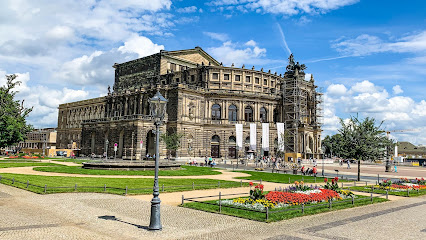
Theaterplatz
0.0 km
Experience the cultural heart of Dresden at Theaterplatz, where stunning architecture, vibrant events, and artistic spirit converge.
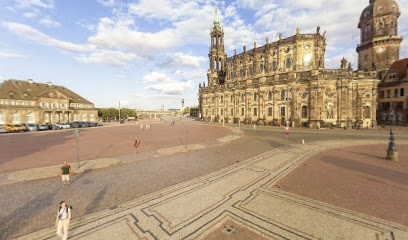
Semperoper Dresden
0.1 km
Experience the beauty of opera, ballet, and concerts at the iconic Semperoper Dresden, a must-visit destination for culture lovers.
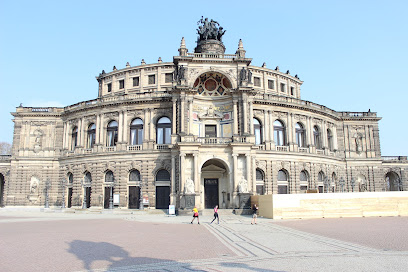
Old Masters Picture Gallery
0.1 km
Explore the Old Masters Picture Gallery in Dresden, a treasure trove of European art featuring masterpieces by Raphael, Rembrandt, and Vermeer.
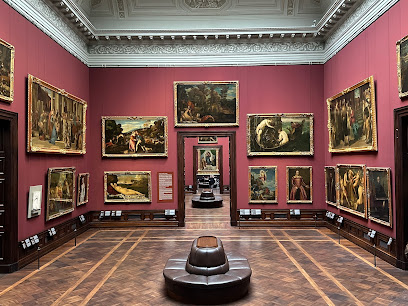
Kathedrale Sanctissimae Trinitatis
0.1 km
Explore the breathtaking beauty and rich history of Kathedrale Sanctissimae Trinitatis, a stunning Baroque masterpiece in the heart of Dresden.
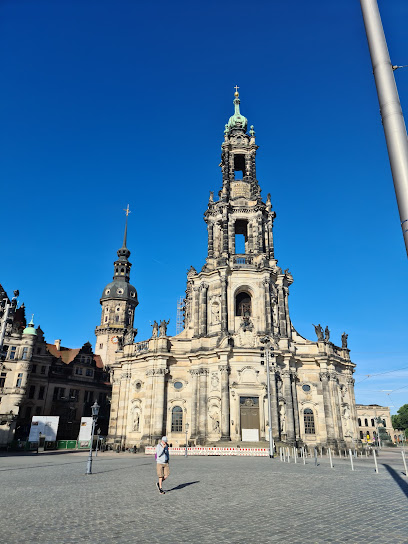
Hausmannsturm, Dresden
0.1 km
Discover breathtaking views and rich history at the iconic Hausmannsturm, a must-visit landmark in Dresden's vibrant Altstadt.
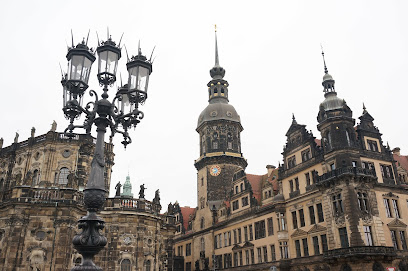
Hausmannsturm
0.1 km
Experience the breathtaking views from Hausmannsturm, a historical gem in Dresden, showcasing stunning architecture and rich cultural heritage.
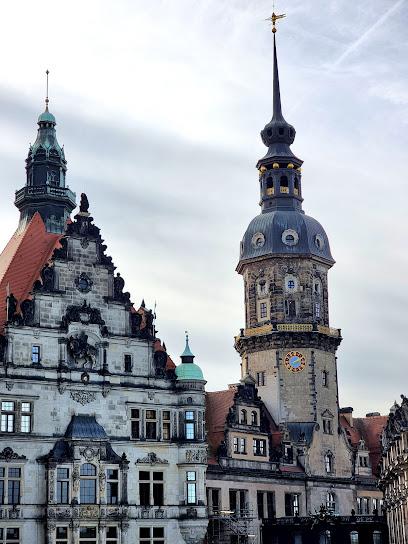
Green Vault
0.1 km
Explore the Green Vault in Dresden, home to stunning art and historical treasures that captivate and inspire every visitor.
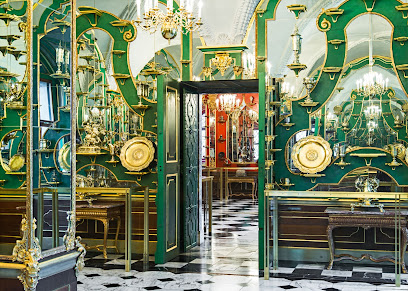
SKD | Green Vault
0.1 km
Explore the opulent treasures of the Green Vault in Dresden, a captivating art museum and historical landmark showcasing exquisite Saxon craftsmanship.
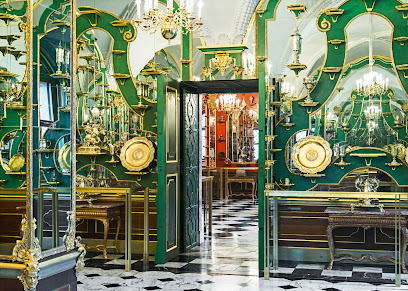
Zwinger Xperience
0.1 km
Experience the opulent Baroque architecture and rich art collections at Zwinger Xperience, a must-visit museum in Dresden.
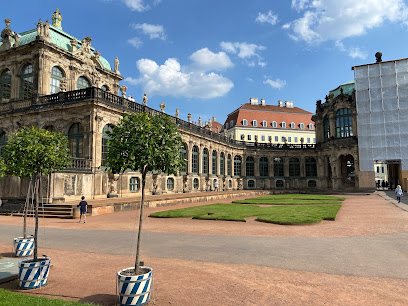
Nymphenbad Dresden
0.2 km
Discover the serene beauty of the Nymphenbad, a baroque fountain in the heart of Dresden’s Zwinger Palace, perfect for relaxation and cultural exploration.
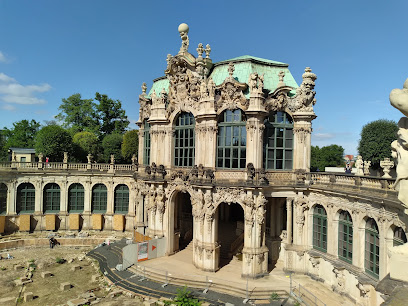
SKD | Staatliche Kunstsammlungen Dresden
0.2 km
Explore the rich artistic heritage of Staatliche Kunstsammlungen Dresden, a cultural gem in the heart of Germany's historic city.
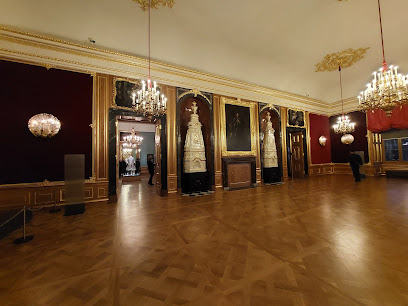
Dresden Castle
0.2 km
Explore the rich history and stunning art collections at Dresden Castle, a magnificent landmark in the heart of Germany's cultural capital.
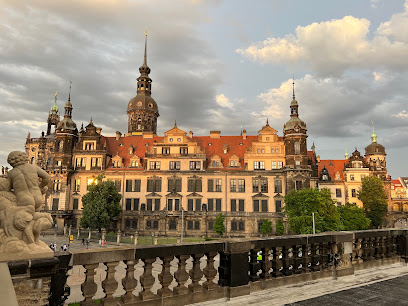
SKD | Turks/Osmanic Chamber
0.2 km
Explore the SKD | Turks/Osmanic Chamber in Dresden, a captivating museum showcasing the rich heritage of the Ottoman Empire through stunning artifacts and art.
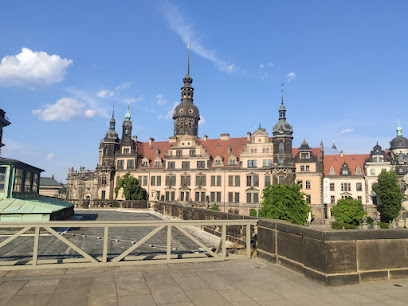
Dresden Zwinger
0.2 km
Explore the stunning Baroque architecture and rich art collections at Dresden Zwinger, a must-visit historical landmark in the heart of Dresden.
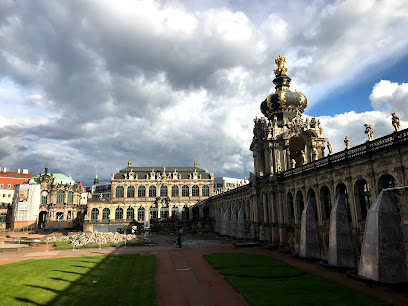
Essential places to dine
Alte Meister Café & Restaurant
0.1 km
Experience exquisite dining at Alte Meister Café & Restaurant in Dresden - where tradition meets contemporary culinary art.

Kahnaletto
0.2 km
Dine on a charming theater barge at Kahnaletto - where authentic Italian cuisine meets breathtaking views along the Elbe River.
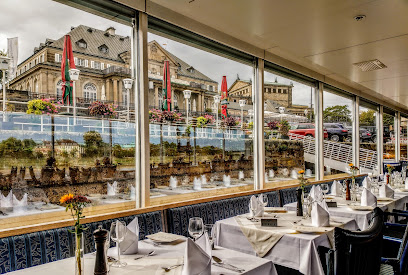
Kastenmeiers
0.2 km
Experience the finest seafood and sushi at Kastenmeiers, Dresden's top-rated fine dining destination nestled in the heart of Altstadt.
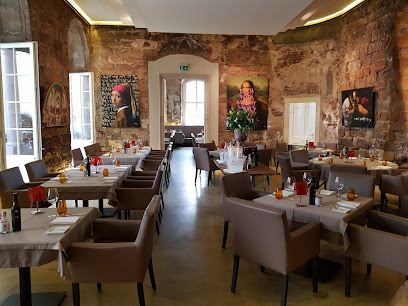
Paulaner´s im Taschenbergpalais
0.2 km
Discover authentic German cuisine at Paulaner’s im Taschenbergpalais in Dresden's historic Altstadt - where tradition meets elegance.
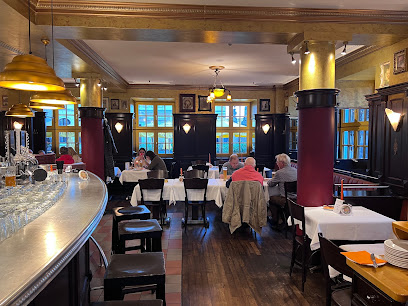
Sophienkeller im Taschenbergpalais
0.2 km
Experience exquisite Saxon cuisine in an elegant setting at Sophienkeller im Taschenbergpalais in Dresden.
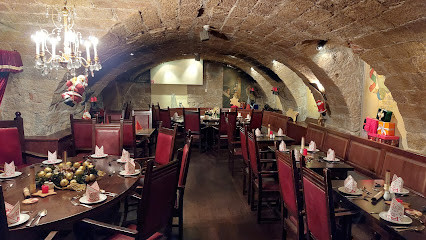
Restaurant Wohnstube
0.3 km
Experience the fusion of local flavors and modern cuisine at Restaurant Wohnstube in Dresden.
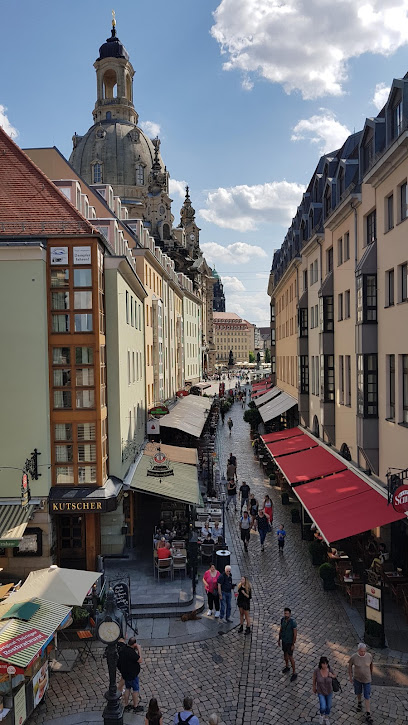
Felix Restaurant
0.3 km
Experience exquisite modern European cuisine at Felix Restaurant in Dresden's Altstadt - where flavor meets elegance.

Restaurant Platzhirsch am Schlosseck
0.3 km
Experience authentic German cuisine in the heart of Dresden at Restaurant Platzhirsch am Schlosseck - where tradition meets modernity.
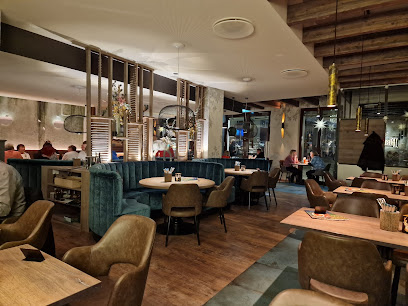
Ayers Rock
0.4 km
Experience authentic Australian cuisine in Dresden at Ayers Rock - where every meal is a flavorful adventure.
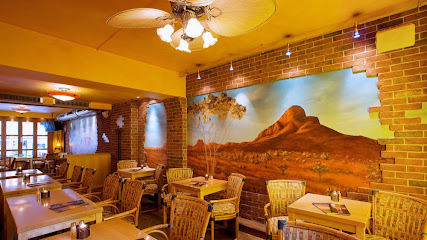
Kutscherschänke - Uriges Wirtshaus
0.4 km
Experience authentic German cuisine at Kutscherschänke - a rustic restaurant that captures the heart of Dresden's culinary scene.
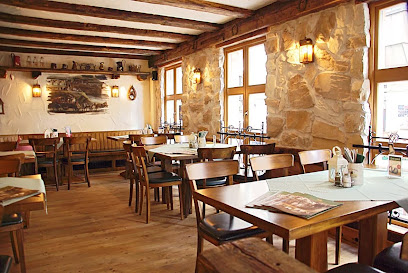
edelweiss - Alpenrestaurant
0.4 km
Savor authentic Swiss cuisine at Edelweiss - Alpenrestaurant in Dresden; where tradition meets taste in a stunning setting.
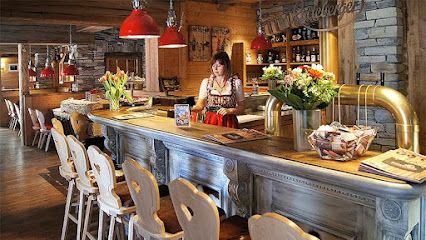
HANS IM GLÜCK - DRESDEN Altmarkt
0.4 km
Discover gourmet burgers at HANS IM GLÜCK - DRESDEN Altmarkt; where taste meets style in the heart of Dresden.
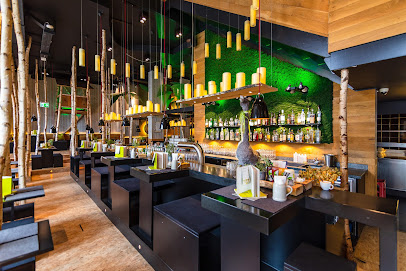
DRESDEN 1900 Museumsgastronomie
0.5 km
Experience Dresden's culinary heritage at DRESDEN 1900 Museumsgastronomie - a perfect blend of history and flavor.
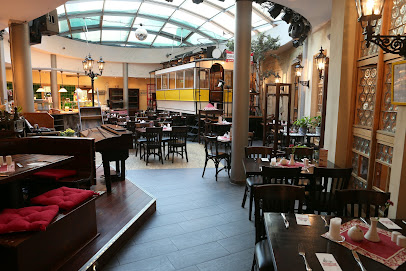
Wilma Wunder Dresden
0.5 km
Experience authentic German cuisine at Wilma Wunder in Dresden – where tradition meets modern culinary artistry.

Pulverturm
0.5 km
Experience authentic German cuisine at Pulverturm in Dresden, where history meets flavor near the iconic Frauenkirche.
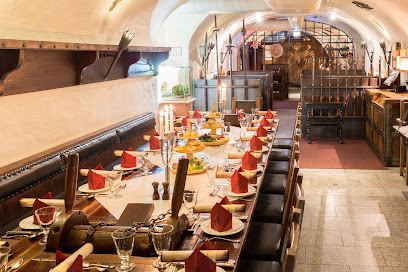
Markets, malls and hidden boutiques
Lindt Boutique Dresden
0.3 km
Experience the exquisite world of chocolate at Lindt Boutique Dresden, where every bite is a moment of pure indulgence.

camel active Store Dresden
0.3 km
Explore stylish and durable casual clothing at the Camel Active Store in Dresden's enchanting Altstadt, perfect for fashion enthusiasts and tourists alike.

LA DONNA Exklusive Damenmode Dresden
0.3 km
Discover exclusive women's fashion at LA DONNA in Dresden, where style and elegance converge for an unforgettable shopping experience.
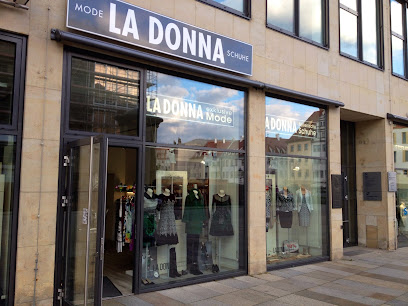
MUDDASTADT
0.3 km
Discover unique gifts and local crafts at MUDDASTADT, the ultimate souvenir shop in Dresden's historic Altstadt.
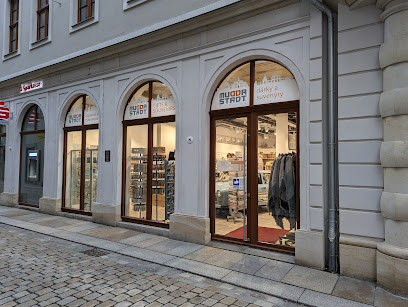
Dresden Souvenirs
0.3 km
Discover unique souvenirs that capture the essence of Dresden's rich culture and history at Dresden Souvenirs, a must-visit gift shop in the heart of the city.

Silbermann Fashion GmbH
0.3 km
Discover exquisite clothing and custom tailoring at Silbermann Fashion in Dresden, where style meets craftsmanship for men and women.
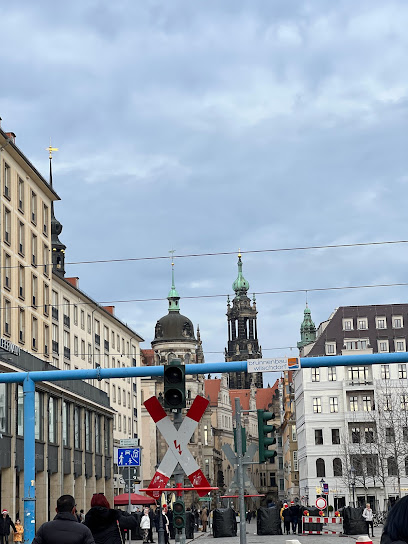
Fürst Romantik und Nostalgie Dresden
0.3 km
Explore Fürst Romantik und Nostalgie Dresden for exquisite chinaware and unique souvenirs that capture the spirit of this historic city.
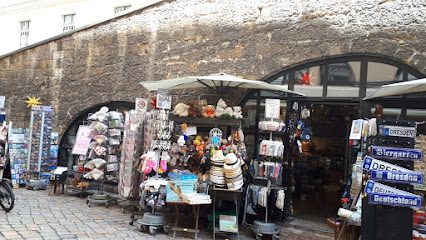
Wolford Boutique Dresden
0.3 km
Explore fashion elegance at Wolford Boutique Dresden, your destination for luxurious lingerie and chic women's clothing in the heart of the city.

Cavalinho
0.3 km
Explore Cavalinho in Dresden for stylish clothing and accessories that blend contemporary fashion with regional heritage.

Glashütte Original Boutique Dresden
0.4 km
Discover the exquisite craftsmanship of luxury timepieces at Glashütte Original Boutique in Dresden's historic Altstadt.
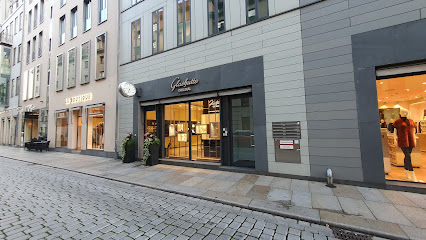
La Boutique Concept Store Dresden
0.4 km
Explore La Boutique Concept Store in Dresden for unique clothing, stylish handbags, and chic shoes that define contemporary fashion.
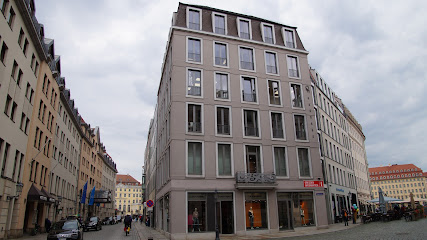
QF Passage Dresden
0.4 km
Discover QF Passage Dresden: A premier shopping mall blending luxury brands, delightful dining, and cultural experiences in the heart of the city.
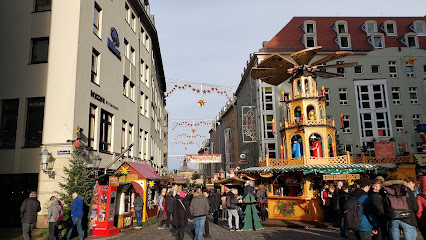
Hello Dresden
0.4 km
Explore Hello Dresden for unique souvenirs that capture the city's rich culture and history, perfect for every traveler.

A. Lange & Söhne Boutique Dresden
0.4 km
Discover the elegance of German watchmaking at A. Lange & Söhne Boutique in Dresden, where craftsmanship meets timeless luxury.
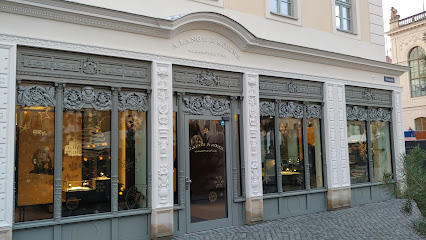
Flying Tiger Copenhagen
0.4 km
Explore the delightful and affordable gift options at Flying Tiger Copenhagen in Dresden, a whimsical shopping destination for unique finds.

Essential bars & hidden hideouts
Schlossbar
0.2 km
Experience the elegance of Schlossbar in Dresden with exquisite drinks and a sophisticated atmosphere, perfect for unwinding after a day of exploration.
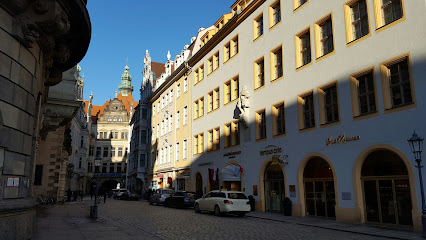
Bar 1705 - Dresden
0.2 km
Experience unparalleled luxury at Bar 1705 in Dresden, where exquisite cocktails and a chic ambiance await you.
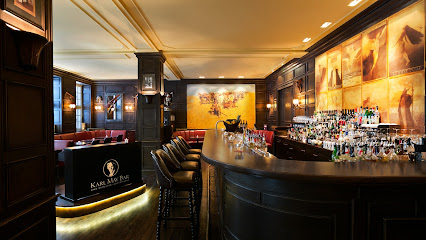
AMARO Bar - Dresden
0.3 km
Experience the vibrant nightlife of Dresden at AMARO Bar, where expertly crafted cocktails meet a cozy and inviting atmosphere.
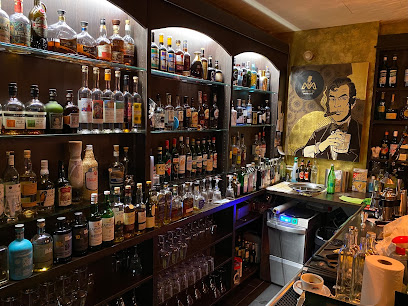
Cocktailbar Pervak
0.3 km
Experience the vibrant and innovative cocktail culture at Cocktailbar Pervak in the heart of Dresden's Altstadt, where every drink tells a story.
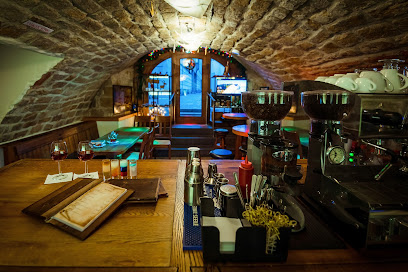
Shamrock Irish Bar & Restaurant
0.3 km
Discover Shamrock Irish Bar & Restaurant - an authentic Irish pub in the heart of Dresden, offering delightful cuisine and a lively atmosphere.
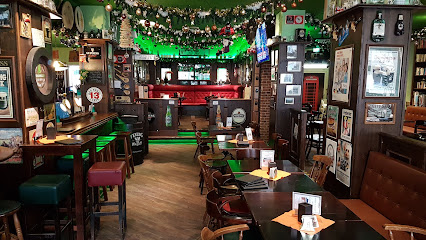
Roof-Top Bar im Vienna house
0.4 km
Discover the Roof-Top Bar in Vienna House: Where breathtaking views meet exquisite drinks in the heart of Dresden's vibrant nightlife.
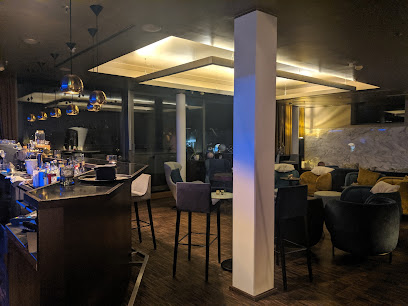
Champagner Lounge
0.5 km
Experience the elegance of Champagner Lounge in Dresden, where a remarkable champagne selection meets a vibrant nightlife atmosphere.
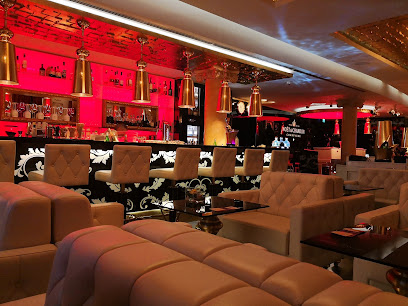
Pianobar
0.5 km
Discover the enchanting Pianobar in Dresden, where live music and exquisite cocktails create an unforgettable nightlife experience.
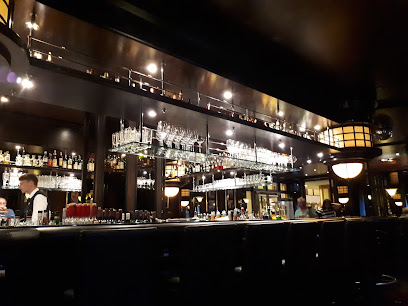
Gin House Dresden
0.5 km
Discover the vibrant Gin House Dresden, where exceptional cocktails and a lively atmosphere await in the heart of the city!
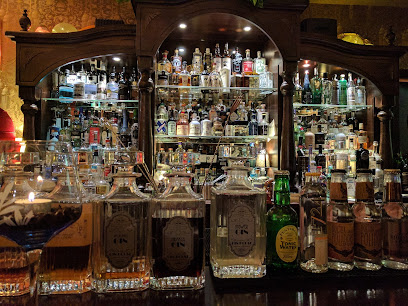
Twist Bar
0.6 km
Experience the vibrant nightlife of Dresden at Twist Bar, where creative cocktails and a chic atmosphere await every visitor.

The Red Rooster - Dresden
0.7 km
Discover The Red Rooster in Dresden - a lively pub offering delicious food, a wide array of drinks, and a vibrant atmosphere perfect for socializing.
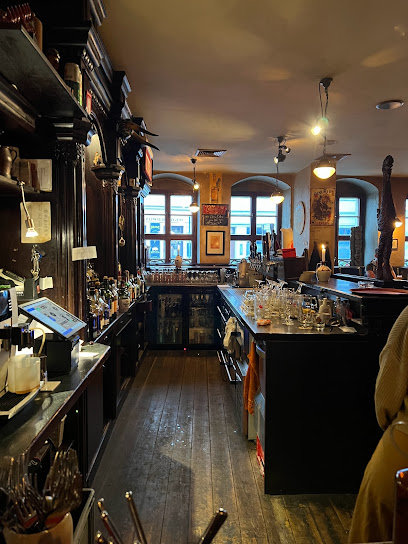
Volt Bar
0.8 km
Discover the lively Volt Bar in Dresden, blending exquisite drinks with a vibrant atmosphere for an unforgettable night out.

HERZ american bar - Dresden
0.9 km
Immerse yourself in the lively ambiance of HERZ American Bar in Dresden, serving exquisite cocktails and a taste of American bar culture.
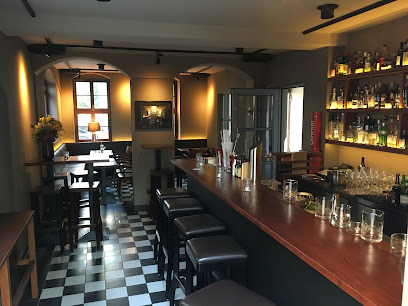
BBC – Bar Brasserie Cassis - Dresden
1.5 km
Discover the vibrant energy of BBC – Bar Brasserie Cassis, a top destination for drinks and light bites in Dresden's lively Neustadt district.
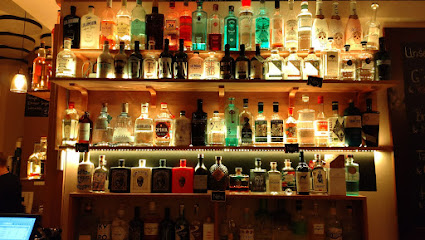
BBC Whisky & Gin House
1.6 km
Discover a refined selection of whiskies and gins in the heart of Dresden-Neustadt at BBC Whisky & Gin House, a premier bar for spirit enthusiasts.
